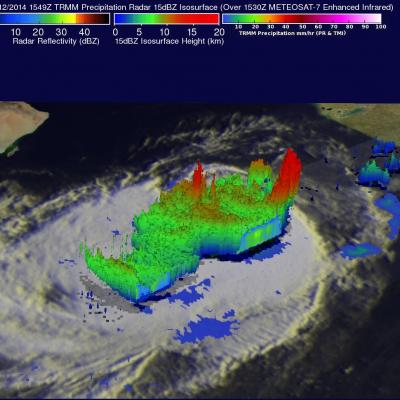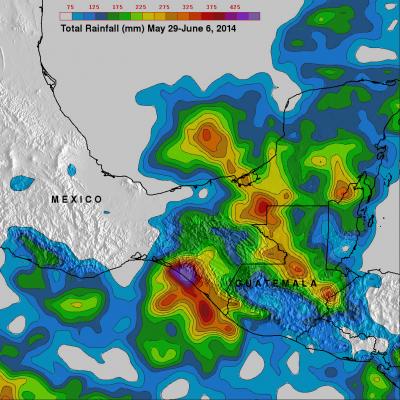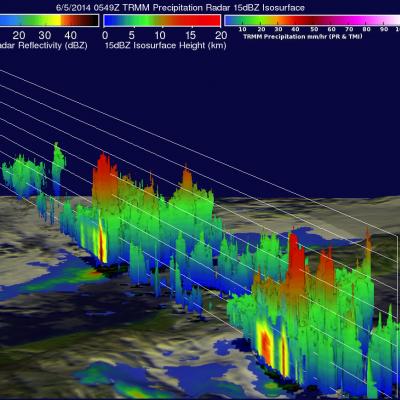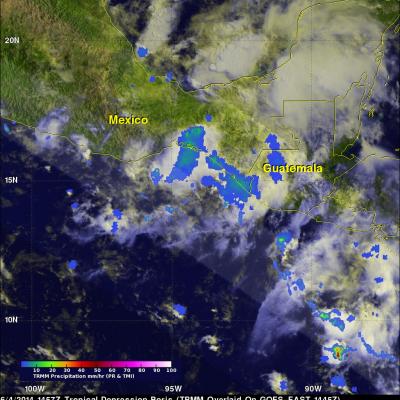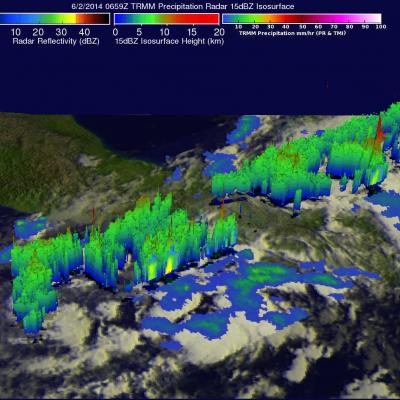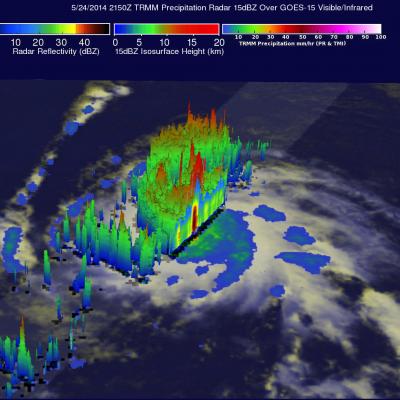Arabian Sea Tropical Storm Nanauk
Tropical storm NANUAK formed west of India on June 10, 2014 and since then has been moving toward the northwest over the open waters of the Arabian Sea. The TRMM satellite found that NANAUK contained powerful storms dropping rain at a rate of over 247.3 mm/hr (about 9.7 inches) when viewed on June 11, 2014 at 1549 UTC. An analysis of rainfall from TRMM's Microwave Imager (TMI) and Precipitation Radar (PR) is shown above overlaid on a 1530 UTC enhanced infrared image from the METEOSAT-7 satellite. TRMM PR data were used in the 3-D view shown in the second image. Those data showed that NANAUK


